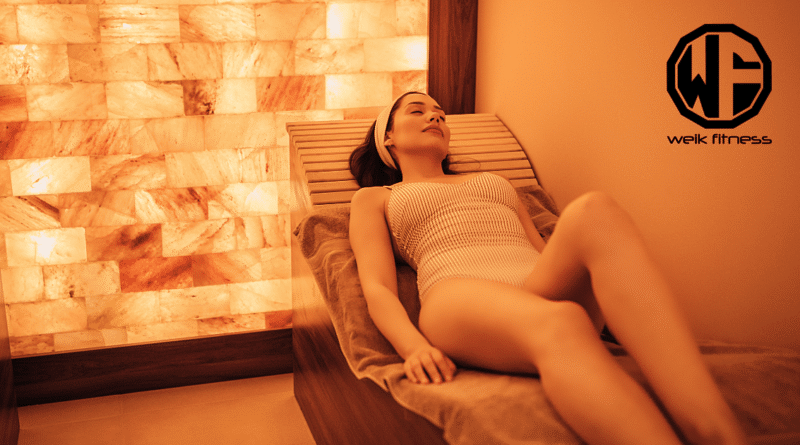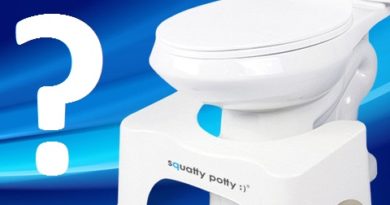Halotherapy: Does This Salt Therapy Actually Work?
Have you ever heard of halotherapy? If you’re like most people, probably not. And that’s fine. But what you’re about to read could help alleviate some of the daily issues you may be faced with.
Are you constantly battling sneezes, coughs, or itchy skin because of allergies, asthma, or other skin conditions? It’s exhausting to search for relief and only come across temporary solutions that never truly fix the issue.
Trust me; there are others out there who can sympathize with you. Their journey for a lasting remedy led me to an interesting discovery: miners working in salt mines rarely ever suffered from lung problems. Why is that? This piece of information got me wondering about something I learned about a while ago — halotherapy, also known as salt therapy.
Related Article: Celtic Salt vs. Pink Himalayan Salt — Which is Better?
After immersing myself in research and learning all there is about dry salt therapy in artificial salt mine environments and the benefits of inhaling aerosolized saline in spa treatments, it dawned on me that this might be the breakthrough many people have been looking for.
In this article, we’ll dive deeper and navigate you through what halotherapy entails, how it operates — highlighting both dry and wet methods — and its potential perks not just for respiratory issues but also for skin conditions and even aiding in stress relief.
Curious to find out if salt could be your breath of fresh air? Let’s jump into things!
Disclaimer: This article is for informational purposes only and is not meant to treat or diagnose any condition. It is recommended that you speak with your doctor before starting any exercise program, changing your daily nutrition, or adding any supplements to your regimen.
Table of contents
Key Takeaways
- Halotherapy comes in two types: dry and wet. Dry involves breathing in salt air, while wet uses a saline solution on the skin.
- People with asthma, allergies, COPD, and skin conditions like eczema might benefit from halotherapy’s healing effects.
- Scientific studies show that halotherapy can improve lung function, reduce respiratory problems, help with skin health, lower stress levels, and lead to better sleep.
- Before trying halotherapy for health issues, it’s important to talk with a doctor to make sure it’s safe for you.
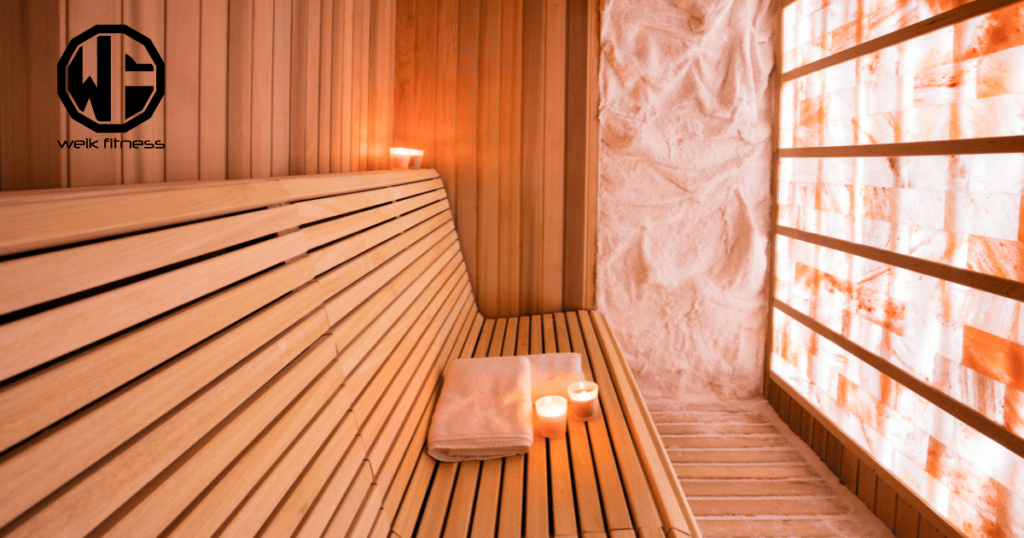
How Halotherapy Works
Halotherapy works through two methods: dry salt therapy and wet salt therapy. Dry salt therapy involves inhaling tiny salt particles in an active salt room, while wet salt therapy incorporates a saline solution applied to the skin to address various respiratory and skin conditions.
Dry Salt Therapy
I tried dry salt therapy in a room equipped with a halogenerator, which crushed salt into tiny particles. This machine filled the air with these particles, and I could actually feel them as I breathed in.
It’s like being inside a giant salt shaker but much more pleasant than it sounds. Salt rooms are designed to mimic the natural environments found in salt caves or mines, known for their healing properties.
The experience targets lung problems such as asthma and chronic obstructive pulmonary disease (COPD). As someone who struggles with respiratory issues, inhaling the salty air felt cleansing.
The theory is that these minute salt particles can remove allergens and toxins from your lungs and nasal passages. This can lead to reduced inflammation and mucus, making it easier to breathe.
After your sessions, you should notice a decrease in wheezing and less reliance on an inhaler if you use one. But again, it’s essential to talk to a doctor before trying this alternative treatment though; while beneficial for many, there are side effects like increased coughing initially due to mucus clearance.
Wet Salt Therapy
I explored wet salt therapy, diving into activities like bathing in salty water and gargling with it. It felt super odd at first, but the idea was to see if these methods could impact my chronic allergies and respiratory health.
The experience was eye-opening. Bathing in salty water reminded me of floating in the ocean, feeling buoyant and refreshed. Gargling with salty water became part of my morning routine, aiming to clear my airway before starting the day.
I even tried passing saline through my nasal canal to address sinus issues — a practice that took some getting used to, as the whole concept seems really weird and disgusting to me. While concerns about skin irritation or conjunctivitis lingered, I thankfully avoided any side effects.
This journey into wet salt therapy showed me a different angle on managing respiratory conditions without always relying on medications. The benefits seemed aligned with what others have found beneficial for bronchial relief — something worth considering for those pondering over halotherapy as an alternative therapeutic solution.
Potential Benefits of Halotherapy
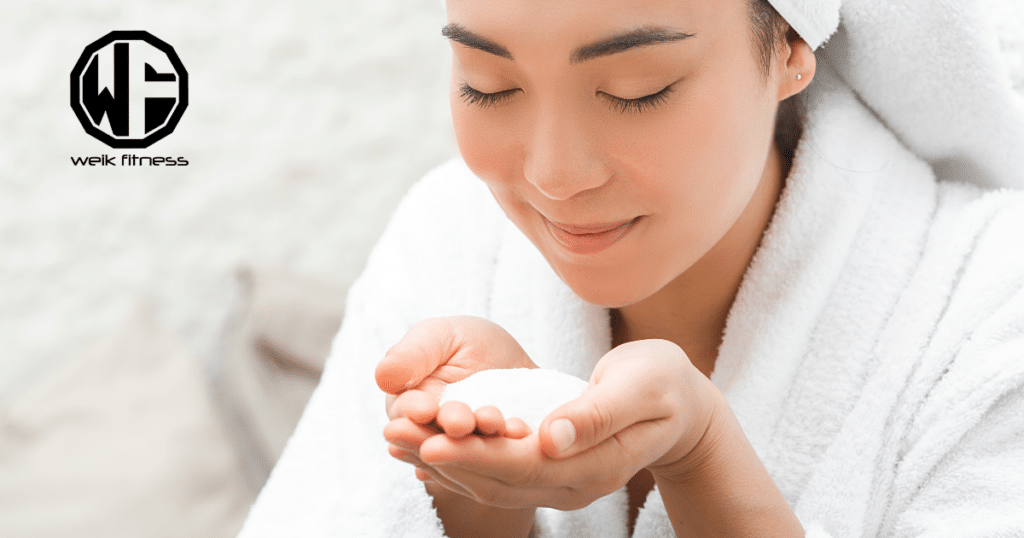
Halotherapy may aid in improving respiratory health, easing skin conditions, and promoting stress relief and better sleep.
People with respiratory concerns might find the benefits of salt therapy for alleviating symptoms and improving their overall quality of life.
1. Respiratory Health
I found that breathing in salt air through halotherapy might really help with my respiratory issues. This type of therapy draws on the way miners in salt caves had fewer lung infections and allergies due to the salty air they breathed.
Related Article: Nose Breathing — The Unbelievable Benefits of Nasal Breathing
Regular sessions in a chamber mimicking an artificial salt-mine environment, which uses a machine known as a halogenerator to grind pure salt into fine particles, could significantly support people (perhaps like you) who may suffer from chronic allergenic respiratory pathologies, including asthma, bronchitis, and COPD.
Through personal experience and diving into research studies conducted on halotherapy’s effects, I’ve seen improvements not just for myself but also for others struggling with similar conditions.
The anti-inflammatory properties of dry salt aerosol appear to reduce inflammation in the respiratory tract, making it easier for us to breathe. It has been beneficial for those dealing with obstructive lung diseases by clearing mucus from the lungs and improving pulmonary function tests and quality of life.
2. Skin Conditions
Salt therapy, also known as halotherapy, has shown promising benefits for skin conditions. It can be effective in treating acne, rosacea, skin allergies, rash, eczema, psoriasis, dermatitis, fungal infections, and signs of aging skin.
Related Article: Dermavol Wonders — Revitalize Your Skin Health
The salt particles inhaled during halotherapy treatment have been found to have anti-bacterial and anti-inflammatory properties that may help alleviate these skin concerns.
3. Stress and Sleep Improvement
Stress and sleep improvement were found to be potential benefits of halotherapy, with the salty air creating a calming and relaxing environment. Research suggests that it can help improve stress levels and sleep quality.
I’ve experienced feeling more relaxed after halotherapy sessions, and some individuals have reported experiencing better sleep as well. These findings indicate that halotherapy may offer a natural and non-invasive way to potentially enhance stress management and sleep without relying on medication.
Halotherapy has been linked to potential benefits for stress reduction and improved sleep quality. The research indicates that inhaling the salty air during halotherapy sessions can create a calming atmosphere conducive to relaxation, potentially helping individuals cope with everyday stressors more effectively.
Moreover, the positive impact on sleep quality is noteworthy, as some people have reported feeling more rested after engaging in halotherapy sessions. This data supports the notion that halotherapy could indeed be beneficial for managing stress levels and promoting better quality sleep.
Evaluating the Efficacy of Halotherapy

Is halotherapy effective? Let’s dig a little deeper. It has been evaluated in scientific studies and clinical trials to determine its efficacy.
Scientific Studies and Clinical Trials
Exploring the science behind halotherapy has led me to delve into the depth of its efficacy through various scientific studies and clinical examinations.
I’ve scrutinized numerous research papers, and here’s a straightforward breakdown of what I found in a rather digestible table format that hopefully provides you with a clearer image of halotherapy.
| Study | Focus | Findings |
|---|---|---|
| Study on COPD patients | Effect of halotherapy on chronic obstructive pulmonary disorder | Patients showed improvement in lung function and a decrease in respiratory episodes. |
| Research on skin conditions | Impact of halotherapy on skin health | Positive outcomes for treatments of eczema, psoriasis, and acne were reported. |
| Analysis on stress and sleep | Benefits of halotherapy for stress reduction and sleep improvement | Participants experienced better sleep patterns and reduced stress levels. |
| Investigation into respiratory allergies | Halotherapy as a treatment for allergies | A reduction in allergic symptoms like sneezing, coughing, and shortness of breath was observed. |
This summary offers a glimpse into the range of potential benefits halotherapy can offer, from aiding in respiratory and skin conditions to enhancing overall well-being by reducing stress and improving sleep. While more in-depth research is ongoing, these findings lay a solid foundation for understanding how halotherapy could be a viable supplemental treatment in various health strategies.
Related Article: Are the Benefits of Walk and Talk Therapy Worth Trying?
I came across these insights while ensuring my exploration was guided by credible sources, and everything pointed towards the promising potential of salt therapy, making it a topic worth considering for those invested in health and longevity.
See If the Benefits of Salt Therapy and Halotherapy Can Help You
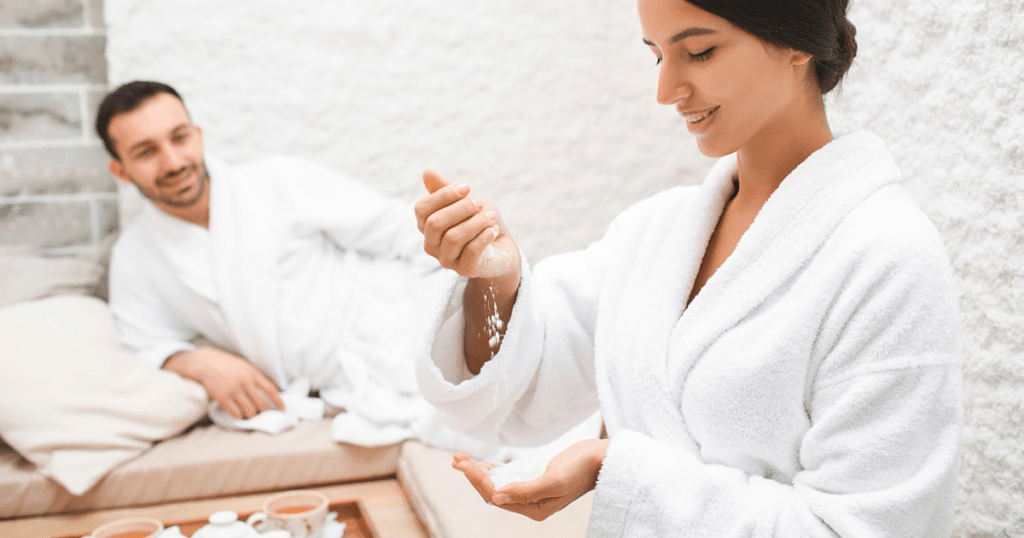
Halotherapy presents promising potential in alleviating respiratory issues and skin conditions. Scientific studies support its mucoactive, antibacterial, anti-inflammatory properties for improving lung health and treating skin problems effectively.
Related Article: Men’s Skincare and Anti-Aging Routines Are the Craze
However, it is crucial to consider the associated risks and consult with your doctor before trying halotherapy. The evidence-based approach underlines the significance of credible sources backing the efficacy of salt therapy.
Halotherapy Resources
- https://www.webmd.com/balance/what-is-halotherapy
- https://www.healthline.com/health/halotherapy
- https://www.lung.org/blog/promising-placebo-salt-halotherapy
Latest Articles:
- Sirtuins: Key Regulators in Health and Disease Dynamics
- NAD3: Natural NAD Supplement for Cellular Longevity & Energy
- What Makes the Best Electrolyte Supplement for Athletes?


*Disclosure: This article may contain affiliate links or ads, which means we earn a small commission at no extra cost to you if you make a purchase through these links. These commissions help support the operation and maintenance of our website, allowing us to continue producing free valuable content. Your support is genuinely appreciated, whether you choose to use our links or not. Thank you for being a part of our community and enjoying our content.
PLEASE CONSIDER SHARING THIS ON YOUR SOCIAL MEDIA TO HELP OTHERS LEARN MORE ABOUT THIS TOPIC.


